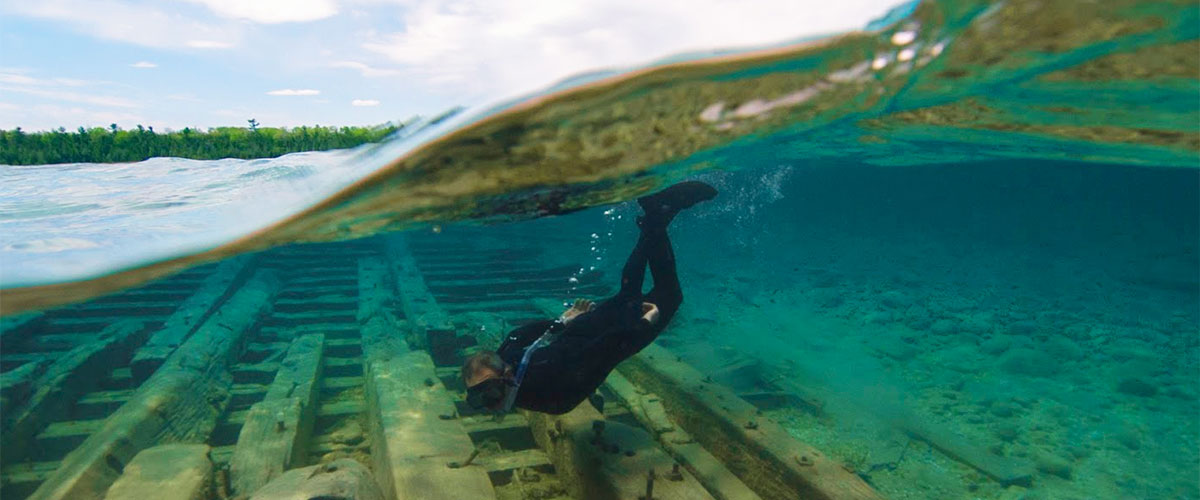Why Maritime Heritage?

NOAA's Maritime Heritage Program, created in 2002, is an initiative of the Office of National Marine Sanctuaries. The program focuses on maritime heritage resources within the National Marine Sanctuary System, and also promotes maritime heritage appreciation throughout the entire nation.
Maritime heritage is a broad legacy that includes not only physical resources, such as historic shipwrecks and prehistoric archaeological sites, but also archival documents, oral histories, and traditional seafaring and ecological knowledge of indigenous cultures. The vision of the Maritime Heritage Program is that a broad spectrum of Americans will be engaged in the stewardship and appreciation of our national maritime heritage.
As with natural resources, numerous user and interest groups, from archaeologists to recreational divers, seek to interact with maritime heritage resources in many different ways (exploration, photography, excavation, etc.). These resources also are impacted by natural factors such as storms, currents and corrosion. Therefore, responsible, informed decisions must be made on how to manage these resources for the enjoyment and appreciation of current and future generations. Maritime heritage resources, unlike living resources, are nonrenewable, so it is especially important that we protect these important links to our past.
Maritime heritage resources, when properly studied and interpreted, add an important dimension to our understanding and appreciation of our nation's rich maritime legacy, and make us more aware of the critical need for us to be wise stewards of our ocean planet.
Stewardship Authority
The National Oceanic and Atmospheric Administration (NOAA) is legally responsible for the management of maritime heritage resources within sanctuary boundaries. Congress directs NOAA, through the National Marine Sanctuaries Act to comply with the Federal Archaeological Program (FAP). This is the collection of laws and regulations that pertain to the protection of historical and archaeological properties on federal and federally managed lands. The National Marine Sanctuaries Act authorizes the Secretary of Commerce to, "…designate and manage areas of the marine environment with special national significance due to their conservation, recreational, ecological, historical, scientific, cultural, archaeological, educational or esthetic qualities as National Marine Sanctuaries.
The law most relevant to the National Marine Sanctuary Program is the National Historic Preservation Act, which directs all federal agencies to develop programs to protect historical and archaeological resources.
Section 106 requires agencies to consider the potential impacts of their actions, which includes the review of permit applications for projects that may allow the disturbance of the seabed, where archaeological remains may lie.
Section 110 requires agencies to actively search for archaeological resources and to assess them for their significance and eligibility for inclusion in the National Register of Historic Places.

